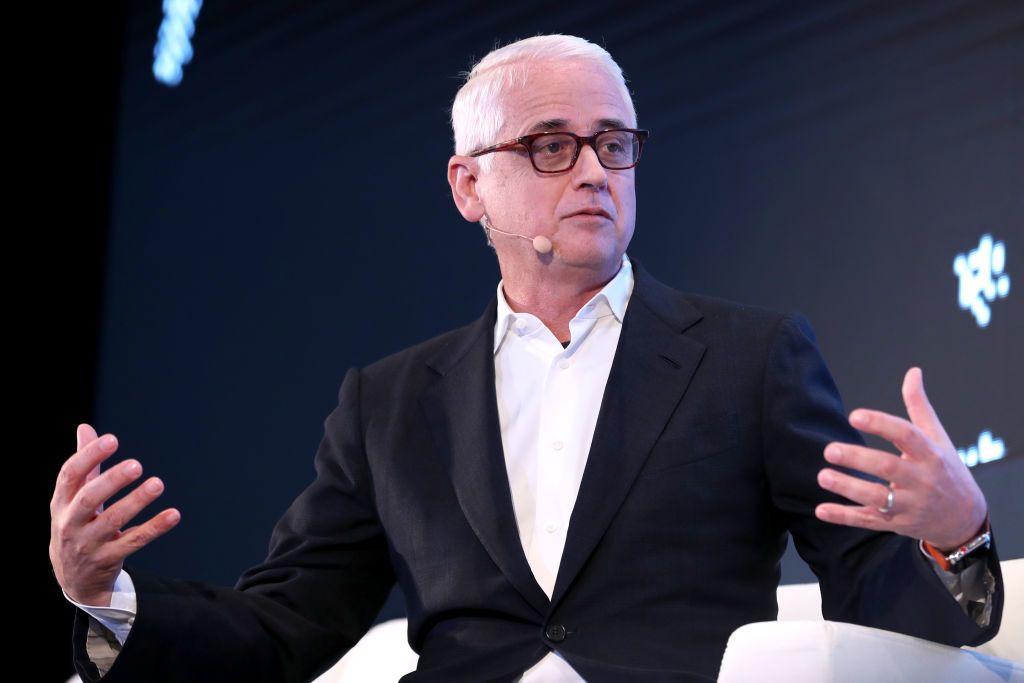(Bloomberg) — Network executives, TV stars and media salespeople are all gathering in New York next week to pitch advertisers on their fall program lineups, an annual ritual known as the upfronts. This year a new kind of guest is also making an appearance.
A number of upstart audience measurement firms will be there claiming their systems for tracking TV viewers are better than those provided by Nielsen Holdings Plc, the current industry standard. Tracking viewers has become more complex in the streaming age, and critics say Nielsen hasn’t sufficiently captured that migration. NBC, for example, will for the first time use data from iSpot.tv Inc., a Nielsen rival, to make deals with advertisers.
While the end of Nielsen’s monopoly has been predicted for some time, many industry insiders believe there’s now serious momentum for change. Horizon Media, a media buying agency that works with brands such as Corona, Geico and Capital One, expects to transact as much as 15% of its deals based on Nielsen alternatives at this year’s upfronts.
“This is happening and it should happen,” said Dave Campanelli, Horizon’s chief investment officer. “We need to think about what we need to get off Nielsen exclusively.”
Nielsen, whose system for measuring audiences dates back to the earliest days of television, has historically relied on a panel of viewers, thousands of Americans selected to represent the general population. “Nielsen homes” have devices that track what people watch on their televisions. Marketers and networks use the data to determine if the shows deliver the agreed upon audience targets in the $65 billion TV ad market.
Nielsen, which is being taken private in a $16 billion buyout, is still expected to provide the bulk of audience data for this season and years to come. Griping about its measurements has come from TV networks where viewership has tumbled in favor of online programming.
So, in come the competitors. Ispot, which tested its system earlier this year with NBC and the Winter Olympics, said it gets its viewer numbers from more than 40 million smart TV sets, allowing it to determine who’s watching faster and more accurately. The 10-year-old company just raised $325 million from Goldman Sachs Group Inc.
Video Amp, founded in 2014, uses data gleaned from set-top box providers like TiVo to capture viewers of live TV and on-demand programs. The company, which plans to go public this year, said it can track one-third of American households and model the remaining homes using big data that “is significantly more accurate than a panel-first approach,” said Chief Executive Officer Ross McCray.
Comscore Inc., best known for collecting data on movie theaters and website traffic, has also been expanding in TV. According to Chief Marketing Officer Tania Yuki, Comscore’s experience tracking social media usage and other digital platforms gives it a more comprehensive view of what is on users’ screens.
Many ad buyers want information that goes beyond Nielsen’s traditional metrics of race, income level, gender and age. “People started looking for a sense of precision and measurement as they were seeing in search with Google and in social with Facebook,” said Dave Morgan, chief executive officer of Simulmedia, which helps marketers place their ads more precisely.
While Nielsen has long been accused by networks of undercounting viewers, the company’s woes grew during the pandemic when it could not conduct its normal repairs on hardware installed in Nielsen homes.
Nielsen has updated its services in recent years and plans to launch a new offering, Nielsen One, in the fourth quarter. Executives said the product will measure across platforms using large data sets, including signals from set-top boxes and smart TVs, in addition to its traditional panel-based measurement.
“There’s a lot of things that we have to change,” Nielsen’s Chief Executive Officer David Kenny said in an interview. “We’re retooling all of that in order to do what we’ve always done exceptionally well.”
Even so, there is no perfect product, said Jason Lim, U.S. chief planning officer at advertising company MediaCom Worldwide Inc. “There are limitations across the board,” he said. Lim expects the industry will adopt an evolved measurement system, be it Nielsen One or a competitor.
Broadcasters and networks may ultimately look at data from a range of companies to make deals, said Arun Kumar, chief data and marketing technology officer at Interpublic Group of Cos, the parent of ad agencies such as Deutsch and Foote, Cone & Belding. The challenge will be comparing the unique systems.
“It’s going to be chaotic,” he said. “How do you compare apples and oranges and beet roots and cabbages?”
Still by next year, 30% or more of TV ad deals will be based on rival data sets, predicts Bharad Ramesh, who leads the research department at advertising giant Group M.
“There are beginnings of movement to have really credible competition in this space,” he said in an interview. “That’s what makes this upfront very different.”
More stories like this are available on bloomberg.com
©2022 Bloomberg L.P.











